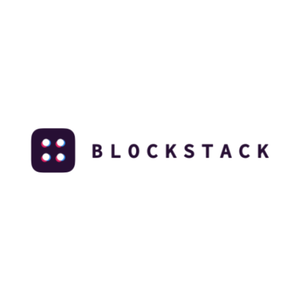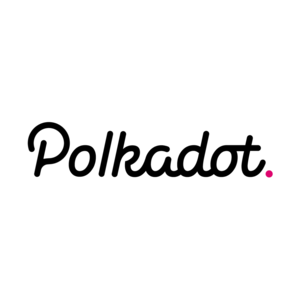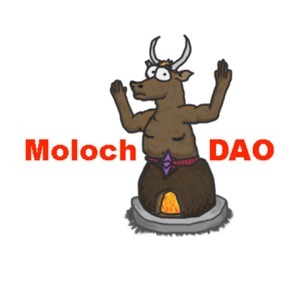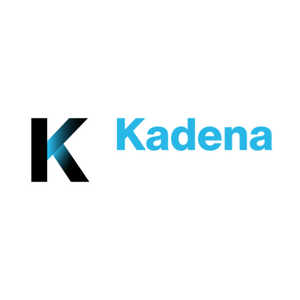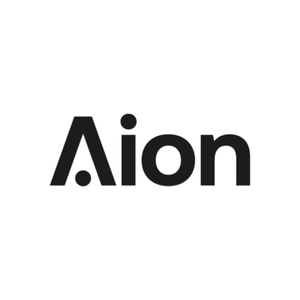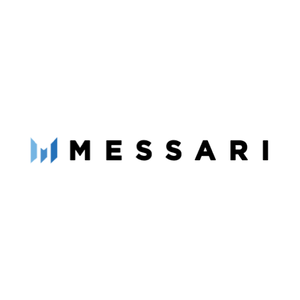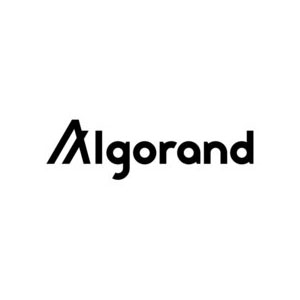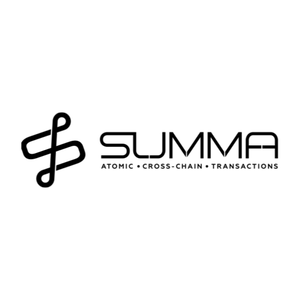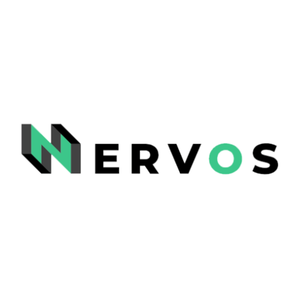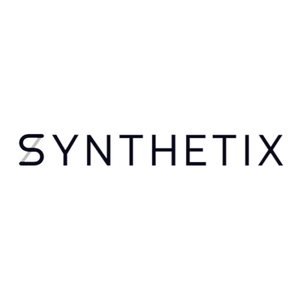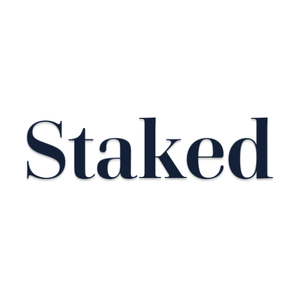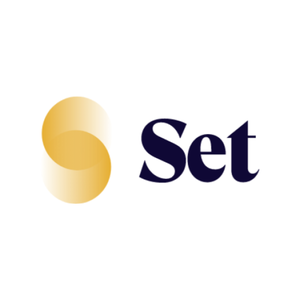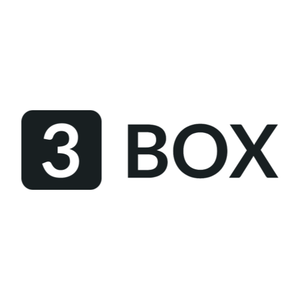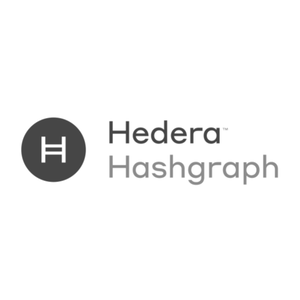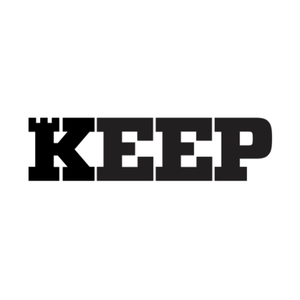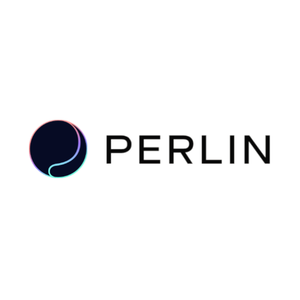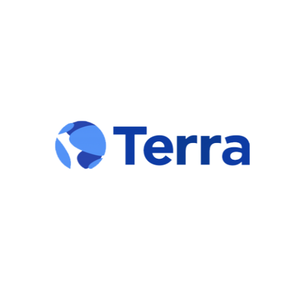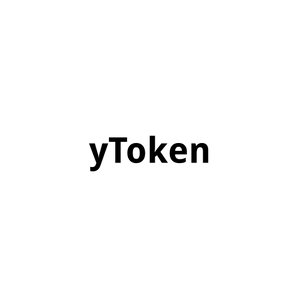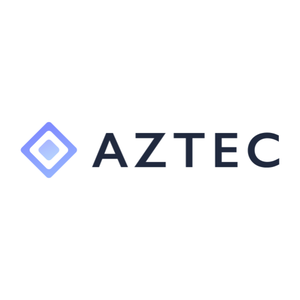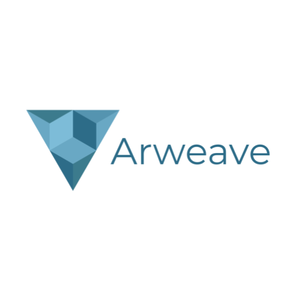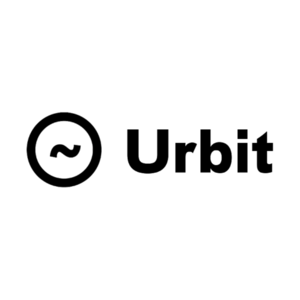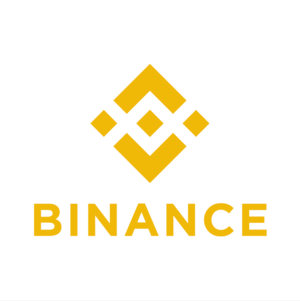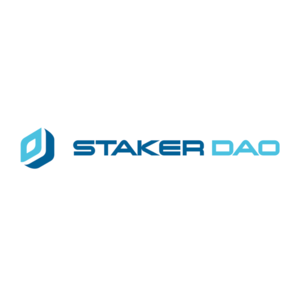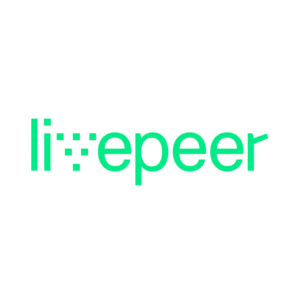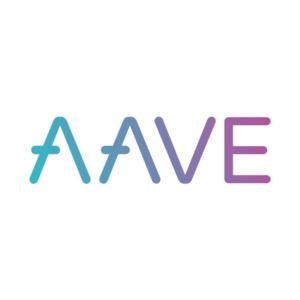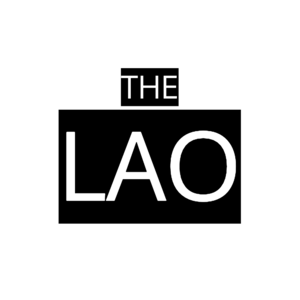Crypto AMA with Blockstack (5.29.19)
Spencer Noon Nov 27, 2019
- Muneeb Ali
- Brittany Loughlin
- Spencer Noon
Alright guys, let's do this since it looks like we've got everyone here. Everyone please give a warm welcome to Muneeb, Brittany, and Patrick from Blockstack!
As a reminder for everyone participating, please keep the discussion respectful and on-topic at all times.
Hello! Thanks for having us Spencer 😁
Muneeb, Brittany, and Patrick - could you guys start off by giving us a brief bio touching on your backgrounds as well as how you got started in crypto? And then a short overview of Blockstack and how it’s going so far? We’ll then be off to the races with questions.
Not sure if we can ask questions yet, but here I go: it’s a bit unclear from the SEC documents (or my reading of them 😅) when the offering would happen, and then what lockups would look like. Could you please give a bit of detrails on how that would work for both voucher and non-voucher purchasers? Thanks!
This is a great question. Hold this thought and we'll have the team address after they do intros. Thx Tim
Hi! I work on Investor Relations and Token Economics at Blockstack. Prior I ran @LatticeVC and worked for 3+ years @USV. I got into crypto in 2013 when we invested in Coinbase out of YC. I’ve been VC investing in crypto since, including Coinbase, Media Chain, Blockstack, IPFS, Stronghold, Open Bazaar, and more. I joined Blockstack in 2019 but invested in the team during their seed round in 2014. So I've seen it go from 2 people to 25+ people today!
Patrick here. I'm the Head of Growth at Blockstack. I joined Blockstack 2 years ago when we were just a team of 4 with no apps. Since then we've grown the core company to 30 people and over 110 apps. I used to work in fintech as the first employee at Earnest (a16z backed) which got acquired by Navient a couple years ago. I started in blockchain by buying my first bitcoin in 2013 and went down the rabbit hole from there.
Hey everyone! Muneeb here. Co-founder and CEO Blockstack PBC. I did my PhD at a Princeton university, specializing in distributed systems. Used to work in cloud computing before and started Blockstack in 2013. I’ve worked on highly scalable distributed systems and internet protocols and excited to bring decentralized computing to the world now.
Other question (sorry Spencer 😁): Blockstack seems like one of the few projects taking a truly differentiated approach in how you are designing your platform vs. all the “smart contract platforms” competing over the same handful of metrics. How did you iterate to the design you currently have? What informed that process?
Bonus: what are your thoughts on what Urbit is building (which also seems to have strayed from the pack in terms of design)?
The offering will happen upon qualification of the SEC. Within 2 days of the qualification the sale will begin. In terms of lock ups, the details are on page 3 of the circular. Stacks sold in this offering are subject to a tempoary "time lock", then 1/24th will be released monthly over 24 months.
Got it, thanks! What is “2 questions of the qualification”?
Also: I assume the lockup is the same for both voucher and non-voucher purchases?
Voucher holders will be treated the same as other Reg A investors in this round. They will have the same time lock.
Look ups for everyone in the upcoming offering is monthly unlocking over 2 years (starting from time of distribution). RE when the offering will happen that really depends on the qualification from the SEC. Internally, we're trying to get ready so we're ready to go as soon as the SEC qualification comes (I must say here that it may never come; full disclosures are in the offering circular).
within 2 days - haha, not sure how that turned into "questions"
The new whitepaper emphasizes the role of the native Stacks token (and I see the primitives for controlling it in https://github.com/blockstack/blockstack-core/blob/develop/sip/sip-002-smart-contract-language.md), but other tokens will have to be implemented using the contract language, right? Are you working on an ERC20-like standard token interface?
We jumped into questions, but going back to the beginning. Here's a bit more about Blockstack and where we're at...
I think the main thing that informs our design is lessons and experiences of the distributed systems community over the last 2-3 decades. It's a scientific field like physics or applied cryptography and there is a disciplined approach to the challenges we're facing. We have 5 PhDs in distributed systems on our team to give you a sense of their quality one of the co-authors of our technical paper Prof. Mike Freedman recently won the 2018 ACM Grace Murray Hopper Award for scalable, performant distributed systems.
Blockstack is building a platform and tools for developers to create decentralized applications. There are now over 100 independent applications built on top of Blockstack already and our community continues to grow. The project started in 2013 during Muneeb's PhD research at Princeton in Computer Science. The team has strong expertise in distributed systems, consensus algorithms, and security analysis.
We spent the first 4 years in R&D, then the past two years on building infrastructure - with the launch of our blockchain in October 2018. We're now focused on growing the ecosystem, serving app developers, and launching smart contracts later this year.
RE developers being able to create new tokens, see our roadmap https://blockstack.org/roadmap/ where we talk about allowing developers to create new tokens in Q3/Q4. For ECR-20 like standard, there will be some standard -- we'll need to review what exactly that ends up looking like.
Of the ~ 100 apps, what are a few of the more compelling ones and who built them?
How does Blockstack's virtual mining compare to classic Bitcoin sidechain designs, or Paul Storzc's drivechain design?
What is the current strategy to manage the funds the PBC raises in the upcoming offerings? In the circular, it seems that to date it has held a combination of BTC, ETH and USD. Is that the plan going forward? How are you thinking about this process?
Sure,
BitPatron is a decentralized alternative to Patreon. They make it so a platform couldn’t easily cut off an artists support from their users or source of income. They've earned $20k last month as a team.
Graphite - GSuite but where you own your docs and only the people you share them with can see them.
BlockuSign - Docusign but clearer connection to who is signing, without any middleman seeing what you are sigining.
Recall, Block Photos and Encrypt My Photos - Encrypted photo storage that’s also portable. Don’t like the UI, easily switch without the pain of uploading and downloading to each new platform.
Decentralized Email coming soon! Bottle.li helps tip creators in BTC
Bunch of apps are listed here: https://app.co/blockstack
The type of developers building these apps are like the same folks who were involved in the homebrew computing club movement, I believe. They believe in user's right to ownership and dev's freedom to innovate. They want to build apps that "Can't be evil" and restore a better relationship between the developer and the user.
Funds will be used to further build the community, research and development, developer education, and for operations of Blockstack PBC. You can find the full details on use of proceeds on page 66 in our circular + details on 76 about the source of funds (which talks about our crypto reserves) https://www.sec.gov/Archives/edgar/data/1719379/000110465919029828/a18-15736_1partiiandiii.htm
Here is that language from source of funds "In the future, Blockstack may sell portions of its cryptoassets in order to finance Blockstack’s activities, depending on market conditions and to the extent such cryptocurrencies are unrestricted. As of December 31, 2018, Blockstack had cryptocurrency reserves of $5.7 million, of which $2.9 million was restricted, and as of such date held $2.6 million of Bitcoin and $3.1 million of Ether, respectively, as a result of our private placements (including sales completed in 2018). During 2018, due to the decline in the market value of the digital currencies as referenced above in “—Prices of Cryptocurrencies,” impairment charges of $8.3 million were recorded on Blockstack’s consolidated statement of operations. As of December 31, 2017, Blockstack had cryptocurrency reserves of $13.5 million, of which $13.4 million was restricted. During 2017, no impairment charges relating to these cryptocurrencies were recorded on Blockstack’s consolidated statement of operations. Because of volatility in the price of cryptoassets, Blockstack’s ability to raise cash from the sale of digital currencies is subject to significant variability. Further, Blockstack may be required to sell increasingly large amounts of its cryptoassets in order to raise similar amounts of funds as a result of volatility in the market prices of cryptoassets, which may lead to significant variability in the amount of cash that may be raised from the sale of all of its cryptoassets."
Have you tried any of the apps found on app.co/blockstack? It's a great way to get a sense for the similarily to cloud apps, the speed, and the portability of data. The majority of these apps are just from the last few months, so I think we'll see a lot of creativity in the coming months!
What do you see as the main purpose of new tokens on Blockstack? In the examples that @participant described, it doesn't seem as if a token would enhance the user experience. Is there a new class of applications you had in mind?
(I'm also going to be posting questions from our Slido instance—marked by a *)
* @David: First off, thank you for chartering the waters with your Reg A+ offering structure. Can you give us any insight into what your process was like with the SEC?
First thing, the Stacks blockchain v1 used virtualchain but Stacks blockchain v2 is moving to a fully-separate blockchain (watch out for our technical whitepaper 2.0 tomorrow!). Virtualchain was somewhat similar to sidechains although there is no transfer of tokens back/to the sidechain, rather new tokens are created on top as new digital assets. In a way, virtualchain was extending bitcoin functionality to create more tokens on top (like ERC-20 does for Ethereum). After our early experience with this design and knowing that Bitcoin is likely never going to change underneath we felt the need for certain functionality at the blockchain layer and ended up designing/implementing those features ourselves as a separate Stacks blockchain.
Thanks! How are you planning to determine when, how much, and of what to sell?
Wow, BitPatron and Blockusign seem very compelling indeed.
For our 2017 token sale, we keep 70% of reserves in USD. We may employ a similar approach in this upcoming offering. As is disclosed in our offering circular, it depends on market conditions.
Muneeb - in your recent podcast with Ari, you talked about the current batch of whitepapers, not following the accepted definitions of CS principles such as the Byzantine General problem. Thereby essentially lying about the feature-set of their protocols. How do you propose the industry counter this? Should there not be a industry-body which set definitions of key principles and thus it becomes clear to all whether a protocol/whitepaper/founder is trying to bullshit the ecosystem?
By the way, we wanted to make sure to share our full disclaimer, since this communication may be deemed "testing the waters":
Rule 255 Legend:
This communication may be deemed “testing the waters” material under Regulation A under the Securities Act of 1933. We are not under any obligation to complete an offering under Regulation A. We may choose to make an offering to some, but not all, of the people who indicate an interest in investing, and that offering might not be made under Regulation A. We will only be able to make sales after the Securities and Exchange Commission (SEC) has “qualified” the offering statement that we have filed with the SEC. The information in that offering statement will be more complete than the information we are providing now, and could differ in important ways. You must read the documents filed with the SEC before investing.
No money or other consideration is being solicited, and if sent in response, will not be accepted. No offer to buy the securities can be accepted and no part of the purchase price can be received until the offering statement filed by the company with the SEC has been qualified by the SEC. Any such offer may be withdrawn or revoked, without obligation or commitment of any kind, at any time before notice of acceptance given after the date of qualification.
An indication of interest involves no obligation or commitment of any kind.
Any person interested in investing in any offering of Stacks Tokens should review our disclosures and the publicly filed offering statement relating to that offering, a copy of which is available on this website.
You may obtain a copy of the preliminary offering circular that is part of that offering statement here.
Blockstack is not registered, licensed or supervised as a broker dealer or investment adviser by the Securities and Exchange Commission (SEC), the Financial Industry Regulatory Authority (FINRA) or any other financial regulatory authority or licensed to provide any financial advice or services.
Thank you
* Can you explain what the Blockstack token is used for?
* What is the monetary policy of the Blockstack token? Did you design the Blockstack token with value accrual in mind?
Our experience has been positive and collaborative. We've taken the approach of working with the regulators to figure out a legal framework where we can open the US markets, so we went in with the expectation to iterate, educate as needed, and adapt. There are publicly available conversations (like my chat with William at Token Summit) and podcasts that go into more detail on how our experience has been.
A lot of applications do not require tokens. The platform currently allows your basic javascript developer to build an end to end encrypted and personal application that can be used by anyone on the Blockstack network. The barrier to creating apps is extremely low and the user experience is closer to that of centralized apps, which is really nice.
Existing apps may or may not choose to use smart contracts or tokens. There are future use cases for tokens like generating content for your app and rewarding it, defi and more. The questions of whether your app needs a token is a broad one and we are allowing this additional functionality.
Bumping this question again. I’m not sure team of distributed systems PhDs really answers the question. Recognizing this is a complex question for a short medium like a TG AMA, but how does the Blockstack design compare to Ethereum and (+10) Urbit?
The Stacks Tokens are the native token for the Blockstack network. It serves as "fuel" in the ecosystem. Stacks are used to register digital assets, like usernames, source code for apps, or digital goods, execute smart contracts, transact, and use as rewards for contributing to the network - through mining and our app mining.
First of all, I think sometimes the intentions of the authors are not malicious. The crypto industry happens to be in a unique position where traditional research circles did not "invent" the technologies and peer-review is largely missing. Plus there are financial incentives involved and enthusiastic communities that jump onto researchers for just talking about technical things. With that said, generally what I've seen work in other computer science sub-fields is for common terminology to evolve (often a lot of survey papers get written), small initial communities of researchers meet and define common terminology, new flagship research conferences get started that help with peer-review etc. There are examples of this for cloud computing, peer to peer networks and so on. I'd encourage people to look at conferences like NSDI, OSDI, SOSP to get a sense of how sophisticated the research community in broader distributed systems field is. The crypto research community is fairly immature in comparison and a lot can be improved.
* @David: Is there any examples of your consensus algorithm that are currently being used by other live projects and where did the inspiration for your design come from?
* Anonymous: On network partitions, longest chain rule can still be messy. How do apps configure with each other across multiple chains from a user perspective?
Got it, so the new Stacks chain is completely untethered to BTC?
For the token, we are releasing our Token Economics Whitepaper soon which includes details on our proposed adaptive burn and mint mechanism. We worked with the Prysm Group, an independent economics group, to audit our existing token economics. We're considering the future minting of the token to the growth of the network. We cannot explicitly comment on value accrual, especially given our current SEC filing. We're planning to deliver more information publicly soon.
Can you guys shed some light on what made you ultimately decide to go with a Reg A+ and cooperate with the SEC? What are some of the positives/negatives of this approach? Many of us have portfolio projects who might consider this someday.
I was commenting on design philosophy (not specific design differences). For design philosophy, I'd recommend classic readings like "Hints in computer systems design" (https://www.microsoft.com/en-us/research/wp-content/uploads/2016/02/acrobat-17.pdf), the end to end design principle (https://en.wikipedia.org/wiki/End-to-end_principle), UNIX design philosophy etc. RE specific design differences from Ethereum and others, I'd recommend this talk:
that goes over differences of "heavy" blockchain (Ethereum, EOS etc) vs. "light" blockchain (us), putting all complexity in the middle of the network (Ethereum and others) vs. keeping complexity with the edges (clients) i.e., us. Global state changes (Ethereum and others) vs. localized state changes (us), on-chain logic (Ethereum and others) vs full-stack approach for scalability, peer-to-peer storage (projects around Ethereum etc) vs. cloud-like private data lockers (us) and so on. Also, seeing differences of our approach to smart contracts is imp. Let me paste a slide here to help.
How do you expect Reg A+ to affect secondary markets for your tokens? Do you expect that secondary markets will have to be broker dealers?
[ Photo ]
Thanks for the resources! I definitely have my opinions on design differences but hearing your updated thoughts is more informative.
Considering the options available, none were that easy. We could've tried to change the law, but that can take a long time. We saw that technology can adapt faster to regulations than regulations can adapt to technology. We found Reg A+ as a law where we could change our technology to fit into that framework. The positive is that you're working directly with the regulators so you get direct feedback. The negative is that it takes more time and money for this process. Overall we think it's a net positive. If we are qualified, it could help open the door to a number of projects to take the same path.
Is STACK trading now?
Not completely initially as we re-use bitcoin's hashpower in the beginning and plan to slowly move away from it as more hashpower builds up on our network. See this talk for more details: https://blog.blockstack.org/video-reusing-bitcoins-hashpower-to-launch-the-stacks-blockchain/
I was trying to move STACKs and it took 4 hours
It's a fairly simple, single leader election algorithm (single leader election algorithms are well-studied in distributed systems and widely used outside of crypto). Main innovation was around making the group *open membership* for leader election and that's where we use our Tunable Proofs (details in the technical whitepaper 2.0).
@muneeb I'm late and this may be addressed but do you view AWS + MSFT (for compute) and say storing state on ETH or something as competitive to blockstack?
Just wondering if "piece meal" DApps would be competitive or if I am thinking of this wrong.
15-minute warning until we wrap up. Toss those last-minute questions in!
Hopefully this has been fixed in the new wallet (https://blog.blockstack.org/stacks-wallet-v3-0-0-send-and-receive-stacks-securely/) upgrade. if you have issues feel free to message support or post to github.
The Stacks blockchain v2 has micro-blocks and main blocks. For quick confirmations, apps can look at micro-blocks which are streamed and quite fast and for more imp things you can wait for finality. Our finality numbers are similar to other PoW chains. Also, it's good to point out here that in our design most of the action happens *outside* the blockchain. All 100+ apps built right now barely send any on-chain transactions. So from an app developer perspective you carefully pick what really must be at the blockchain layer and depending on the importance of that function you pick an appropriate no. of confirmations to avoid any potential problems.
* Anonymous: How is cost of security considered given non-moneyness of stacks & the fact blocks are never truly finalized?
Thanks, I used the updated one. Still can't get info on Stack being traded.
@muneeb Do you have any intentions in the future of building a for-profit business that is complementary to the network? Is that something you think can and/or should be disclosed in your filing?
Security is analysed through the typical lense of "how much does it cost for a malicious actor to attact this network". Not sure about the non-moneyness of Stacks part as to what that means. Blocks are certainly finalized, and the finality metric is similar to other PoW chains like Bitcoin.
For the secondary market in the U.S., we discuss this on page 23 of our circular. As far as we know, there is no FINRA-approved ATS or exchange that can legally list a cryptographic assets such as our token. We hope that will soon change and are monitoring for developments. This is all we can disclose at this time.
Currently, there is no authorized exchange or alternative trading system (ATS) for buying and selling Stacks or Stacks futures, and we cannot comment on when an exchange or ATS might list Stacks at this time. Please keep an eye out for updates at stackstoken.com. If you see Stacks listed on an exchange, please let us know, as the listing may be illegal or a scam.
I'm not sure I completely understood this question but I'll try to answer. Eth compute/storage is extremely expensive given all logic/data on-chain. Cloud providers are orders of magnitude cheaper but centralized. Blockstack's approach is unique where user's connect their own private data lockers; they get cloud-storage-like performance but developers are not paying for any servers/databases. The Stacks blockchain has minimal data, mostly just pointers to data lockers or universal usernames and access credentials.
it's trading, and I have let you know a week ago, and I was able to buy and sell. I don't want to disclose the exchange here, but would appreciate more details on it
Are there plans for non-US investors? Obviously it wouldn't be ideal for all investors to be located in one geographic region long-term.
You're welcome! I can talk about this topic for hours. So will find some other medium to post more 🙂
Blockstack's long-term strategy is to decentralize development and governance of the Blockstack network such that no single entity, including Blockstack, is in control of the network. At some point when this decentralization process is complete and there is a healthy ecosystem of applications and users on the network, Blockstack PBC expects to develop new business models, which may include the development and commercialization of premium versions of open-source software, enterprise licensing for blockchain technology, and development of new applications for the network. This is disclosed in the offering circular on page 69
This is helpful, I should have made the question clearer but this is a perfect answer. Thanks again
Awesome...what is the best place to report minor typos in draft WP you sent along?
Non-US investors are allowed to participate in the Reg A (subject to each country's local laws, so may not be offered to certain countries). Also, we were recently in Asia to help educate developers about Blockstack and tell more regional investors about what we're doing. See this blog post RE how we see geographic diversity as important and recent concrete things we've done about it: https://blog.blockstack.org/blockstack-and-spartan-group-are-teaming-up-in-asia/
Thanks! You can send them to me. We shared a draft with this group so we could share before the AMA, draft is going through team revisions today! We plan to share publicly soon!
Alright everyone, that's all the time we've got! Let's give a massive thanks to the Blockstack team for coming on 🙂
Thanks and good luck!
And blockstack team - what's the best way for ppl to stay up to date and/or get in touch?
thanks everyone for the questions! fun fact: I took this AMA on my laptop in the corridor right outside a lunch spot in NYC 😄 (people around were definitely looking at me like what is so imp that this guy couldn't find an office or a coffee shop)
Thank you for all of the questions! And patience for legal approved answers + disclaimers. We're excited to have a public filing but it comes with a little more oversight 🙂
🙏
Stay tuned for more updates here too! http://blog.blockstack.org
Haha that's amazing - thanks again guys.
And thanks Crypto AMAers for tuning in and asking 💯 questions as always
Yep, we're always available. I'm @muneeb on Twitter and Patrick is @PatrickWStanley.
Later! 👋
